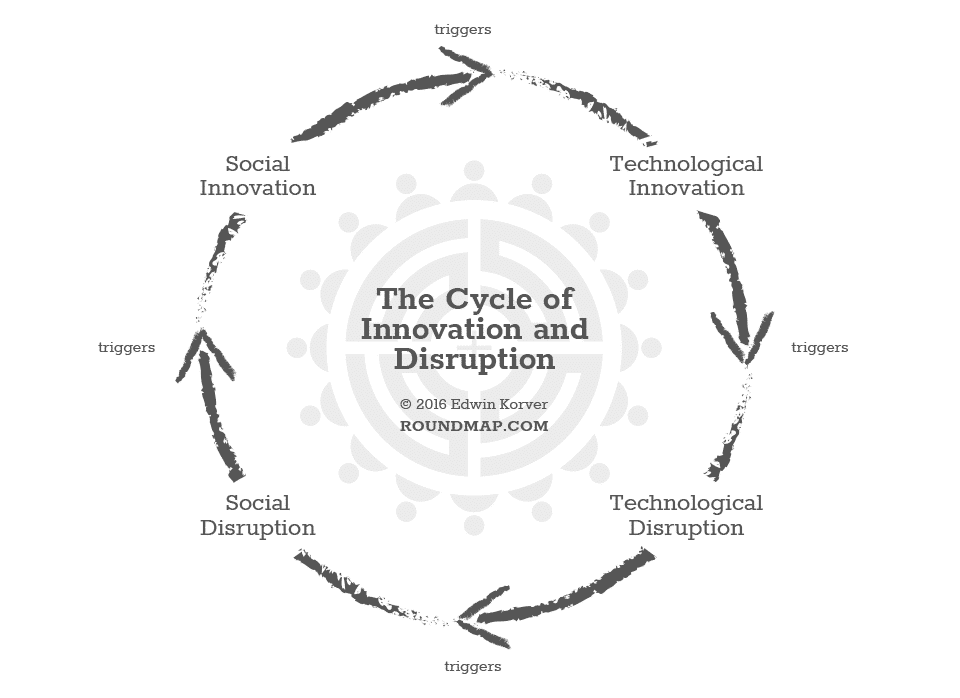In the intricate dance of progress, RoundMap’s Cycle of Innovation and Disruption™ takes center stage. It commences with a spark of Technological Innovation, introducing groundbreaking advancements that can potentially render previous innovations obsolete. This phase termed Technological Disruption, can precipitate a decline in established revenue streams. As these streams wane, a ripple effect ensues, manifesting as Social Disruption. However, as the pressures mount, they inevitably drive the need for Social Innovation. This renewal phase witnesses the re-skilling of individuals and the strategic restructuring of enterprises.

Here’s a more detailed explanation of the four stages represented in the cycle:
- Technological Innovation:
- This stage initiates with a significant breakthrough in technology, often derived from extensive research and development, which introduces new products or services to the market. The key characteristic of this phase is the novelty and the potential it holds to change existing market structures or consumer habits. Technological innovation is usually marked by a surge of investment and a flurry of activity as new players emerge and existing companies attempt to capitalize on the innovation.
- Technological Disruption:
- As the innovation gains traction, it disrupts existing markets and industries. This disruption is not merely a disturbance but a fundamental change in how industries operate. Established players may struggle to adapt, leading to a decline in their market share. This phase is often characterized by the creative destruction described by Schumpeter, where old technologies and companies are replaced by new ones. This disruption can also lead to the obsolescence of certain jobs and skill sets as the market demands new competencies.
- Social Disruption:
- The effects of technological disruption extend beyond the economy and into society. The displacement of workers and the need for new skills can lead to social challenges, including unemployment and the need for large-scale retraining. This phase may also trigger shifts in consumer behavior and societal values, as new technologies often change the way we live and interact with one another. Social disruption requires a response not just from businesses, but also from policymakers, educators, and other stakeholders in society.
- Social Innovation:
- In response to social disruption, this stage is characterized by the development of new strategies, policies, and practices that aim to mitigate the negative social impacts and harness the positive potential of the new technological landscape. Social innovation may involve the creation of new educational programs to develop the workforce, the formation of new social norms that embrace the changes, and the establishment of social enterprises that address societal challenges through entrepreneurial means. It is an adaptive response that aims to integrate technological innovations into the social fabric in a way that is sustainable and inclusive.
The cycle shows that innovation and disruption are not just singular events but part of a continuous process. Each stage triggers the next, creating a self-sustaining loop that drives society forward. It is a delicate balance between the excitement of new possibilities and the need to manage the upheaval they cause. The cycle also implies that the ability to anticipate and manage these stages can be a significant competitive advantage for both businesses and societies.
